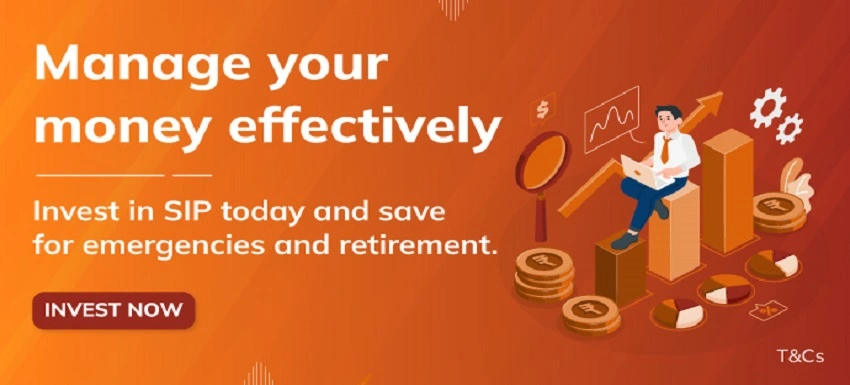THE
ORANGE
HUB
What are Mid Cap Funds? How It Works & Its Benefits

When discussing equity Mutual Fund investments, choosing the right scheme focusing on market capitalisation is essential in achieving your investment goals. Researching about a company's market capitalisation helps understand the advantages of investing in it and assess the risks involved. You will find various types of equity Mutual Funds categorised based on their company’s market capitalisation, including large-cap, mid-cap and small-cap. This blog will explore what mid-cap funds are, how they work and their benefits.
What are mid-cap funds?
Mid-cap funds invest a majority of their assets in equity-related instruments belonging to mid-cap companies. According to the Securities and Exchange Board of India (SEBI), mid-cap companies rank between 101 and 250 based on their market capitalisation. Since these companies fall between small-cap and large-cap companies, they offer benefits and involve risks of both.
Although they have better growth potential than large-cap funds, they are also more volatile. They are more stable but offer lesser returns than small-cap Mutual Funds. To summarise, mid-cap funds provide the perfect balance between return and risk. As investors, if you select mid-cap schemes wisely, including an ideal selection of fund managers, stocks and sectors, you can receive better returns.
Features of mid-cap funds
Here are a few benefits of investing in mid-cap funds:
Long-term investment
Most investments in equity Mutual Funds are volatile. Hence, investing in them for a longer period helps in securing good returns. Since mid-cap companies are in their growth phase, they have higher chances of turning into large-cap companies in the future. Hence, aim for an investment horizon of around ten years to benefit from mid-cap stock investments
Professional fund management
Fund managers are experts who decide about buying or selling stocks from your portfolio. Therefore, choosing an experienced fund manager ensures putting your money in safe hands. Look at the fund house's past performance over the years and see how the team has handled market volatility till date
Expense Ratio
A fund house charges Expense Ratio as their fund management and administrative cost. Although it is a small percentage of the total fund assets, the SEBI mandate does not let the expense ratio go beyond 2.5%. Therefore, look for a mid-cap fund with a lower Expense Ratio, resulting in better investment returns
Suitability
As an investor, you can enjoy better compounding benefits from mid-cap equity funds. However, achieving this requires time and patience. Young investors starting early get the maximum benefits from these investments. If you are approaching your retirement age, choose the funds carefully while keeping your age and earning years in mind. When planning to invest through SIP, ensure that you can afford the instalments conveniently.
How do mid-cap funds work?
Mid-cap Mutual Funds are riskier than large-cap funds. Hence, opt for these funds only if you have a high-risk appetite. Moreover, you must have an investment horizon of around ten years. Remember, mid-cap companies hold many opportunities for wealth creation and investment. Hence, after researching the market, you must choose a scheme with good investment opportunities. If you have a low-risk appetite, reconsider investing in these funds. Also, consider your investment horizon, risk preference and financial goals before investing in a mid-cap fund.
Benefits of investing in mid-cap Mutual Funds
Both short and long-term investors prefer investing in mid-cap investment schemes for their higher returns compared to large-cap funds. The following are the key advantages of investing in mid-cap Mutual Funds:
Opportunity for wealth creation
Generally, mid-cap companies are stable in their business model with ample growth potential. So, these investments often generate greater value for investors if invested for a long time. Hence, they are the greatest investment options for investors with medium to long-term investment horizons
Investment diversification
Diversification in the investment portfolio safeguards your capital against harmful volatility effects. By diversification, we mean spreading your capital investments among different stocks and sectors. Since mid-cap funds invest money in multiple sectors, they expose your capital to fewer risks
Liquidity
Usually, mid-cap investments are open-ended. That means you can withdraw your funds anytime you need money. However, making withdrawals before one year attracts an exit fee
Handling by professional fund managers
Expert fund managers manage Mutual Funds on behalf of investors. Moreover, asset management companies recruit experienced finance professionals to create research teams. With a mid-cap Mutual Fund scheme, you can avail their professional expertise for free
Low investment requirement
Mid-cap Mutual Funds start from ?500 for SIPs and ?5,000 for lumpsum investments. You can start investing in these funds with a small amount and build wealth over time
Accessibility
A wide range of investors can access mid-cap Mutual Funds, thanks to their investment in SIP schemes with low investment requirement. Due to high accessibility, they are suitable investment options for both institutional and individual investors.
Points to consider while investing in a mid-cap Mutual Fund
Fund performance: Before investing, it is crucial to check the fund’s past performance for one, three and five years. Compare them with the category average and benchmark to make an informed decision. Funds that consistently deliver high returns have higher chances of delivering similar returns in the future as well. However, a fund’s past performance does not guarantee its future returns
Expense Ratio
The Expense Ratio is the fee a fund house charges for managing your funds. Choose a fund manager with a low expense ratio to get the most returns and build more wealth. Therefore, check the fund manager's Expense Ratio before investing and compare it with the expected returns
Investment horizon
Mid-cap funds are most suitable for investors with long-term investment horizons and financial goals. Due to their high volatility quotient, they may not deliver high gains in the short term
Entry and exit load
While mid-cap funds often do not have an entry load, they have an exit load when you withdraw them before one year of investment. Check the policy document to know these figures.
Mid-cap funds are the best investment instruments for investors with a long-term horizon. However, before investing, check their past performance, fund manager’s profile, current portfolio, expense ratio and entry or exit load to maximise returns. Invest in them through SIPs to achieve your financial goals conveniently.
Scroll to top



